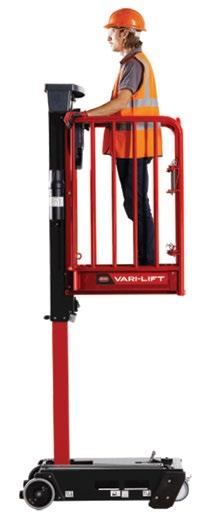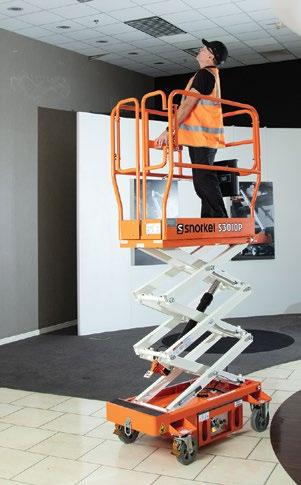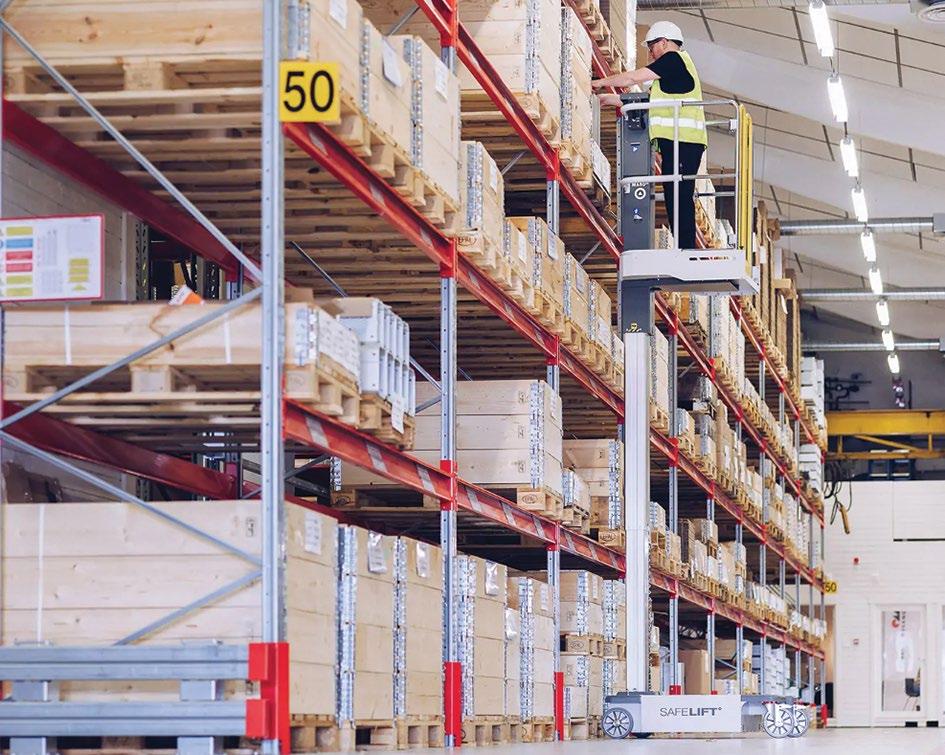
20 minute read
Productivity overtakes safety?
Productivity overtakes safety?
In recent years low level work platforms have ‘flown below the radar’ compared to larger scissor and boom lifts. It is odd that low level work platforms are predominantly sold in the UK, parts of the Middle East and to a lesser extent, the Netherlands and some Nordic markets. The sector’s relatively low profile might explain why more of the larger manufacturers have not adopted them, leaving opportunities to specialist companies.

But what is a ‘low level work platform’? And why is it not replacing ladders, mobile alloy towers or podium steps more rapidly?
We consider a low level lift to be one that has a working height of five metres or less and can be self-propelled or push around with either a battery powered lift mechanism, or manually elevated. While there were some efforts in the past, the sector came into being as result of the European Work at Height directive in 2005. The immediate aftermath in the UK was a time of myth and overreaction among the health & safety teams of major contractors and those newspapers that love a big shock headline, or ‘wheeler dealers’ that spotted a ‘get rich quick’ scheme and money making opportunity. Headlines such as “Ladders are banned” frightened contractors and inspectors into ‘gold plating' the rules, over rigidly interpreting and enforcing them. The new directive meant that protection against falls from height - which was previously only required above two or three metres - was now interpreted as falls from any height - no matter how low.
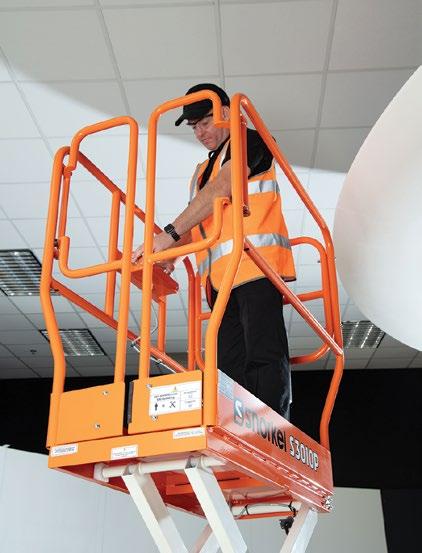
This led to rumours that contractors, builders and window cleaners were banning any type of ladder from job sites under the fear that the HSE (Health & Safety Executive) would prosecute all those that did not comply. All of which was nonsense, but it did lead to several companies diving in and developing solutions for ‘ladderless’ work sites.
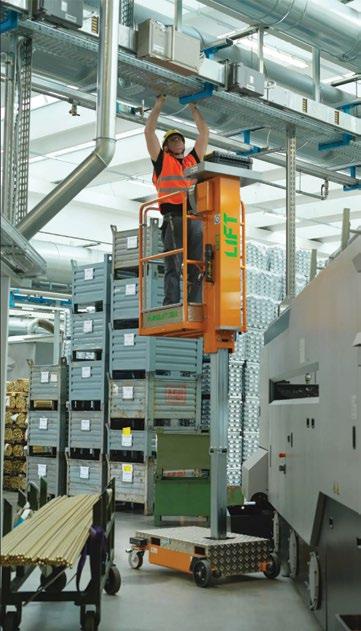
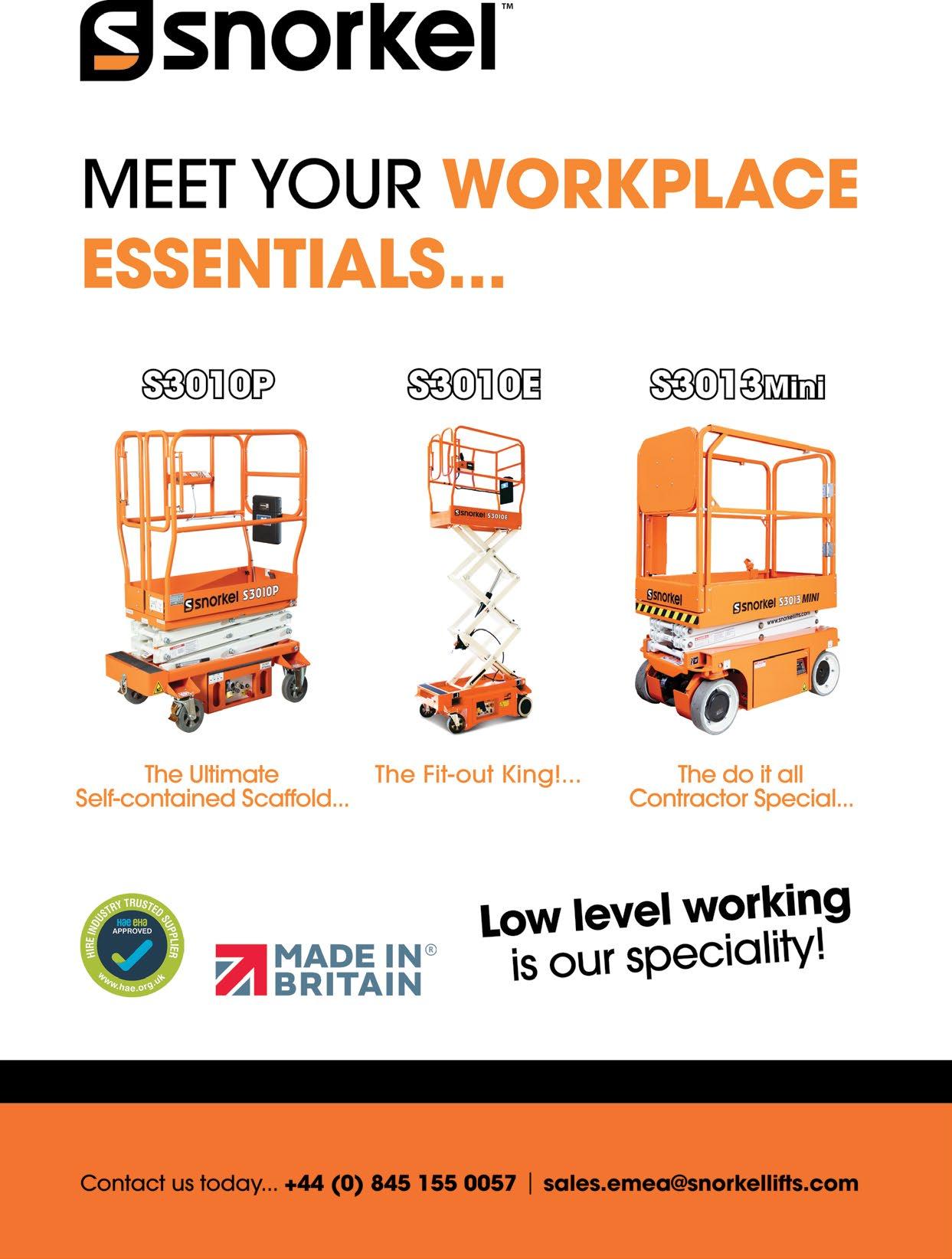
First, into what became known as the low level market, in early 2005 was ladder and scaffold group NSG with the Pop Up push around scissor lift, manufactured by a Chinese supplier. It had a working height of 3.6 metres, weighed 270kg and had an overall width of only 700mm, an overall length of 1.13 metres, a platform capacity of 240kg and a price as low as £3,000. When exhibited for the first time at the Hire Show it took the market by storm and the orders flooded in. Around the same time industry pioneer Brian King, who managed CTE UK at the time, had been working with Nationwide Platforms to develop a low level push around lift, and came up with the CTE Power Tower with a 5.1 metre working height and sigma type lift mechanism. King then set up his own company Power Towers to manufacture and sell the product, while remaining onboard at CTE. The first unit was delivered to Nationwide in early 2007. Both companies profited enormously from the rising pressure in the UK to move to some form of powered access in place of ladders. They were aided by the fact that some leading contactors spread the word that when they had used the lifts on a project their efficiency and quality of work improved, but most importantly there were far fewer reports of strain or minor injuries than when towers or ladders were used. The growing demand encouraged the UK rental market to embrace the concept, while it also brought some of the large tool and general rental company chains into the powered access market for the first time. Almost 20 years on, most leading rental companies run significant fleets, the largest being Vp owned MEP Hire with around 6,800 units - although most UK rental companies have reduced numbers slightly in recent years, possibly with the advent of the self-propelled micro scissor and mast lift.
Having mentioned at the start that most of the manufacturers in the sector are smaller specialists, many will be aware that global aerial lift market leader JLG is a significant player in the sector following its acquisition of Power Towers in 2015. Power Towers was arguably the most innovative player in the market, introducing the first easy to use and practical manual lift mechanism, with the Peco lift mast type lift in 2012, followed by some very light weight self-propelled models. In the years following its acquisition, Power Towers continued to operate as a standalone company, however, more recently it has been integrated into the JLG corporate machine, much the same way that Hinowa and Ausa are being integrated into the orange and cream.
Moving on from the UK
When it came to marketing low level platforms in other countries, it has been surprisingly challenging. The Middle East was an early adopter because it turns out that the large number of UK contractors working in the region insisted on using them, both from a safety and productivity basis, especially when ‘fitting out’. The more developed markets proved more challenging. Italy oddly enough had been in the market for many years before the Pop Up came along with Bravi having started in 1995, while companies such as Faraone also produced low level platforms. But even today ladders are still widely used in Italy and the cause of many workplace injuries.
The Netherlands, a massive scaffold tower and ladder user, began adopting the product, but even now it is hard to claim that it is fully mainstream. The same might be said of the Nodic region. More recently Germany appears to be growing, as is France, but a recently signed supply deal between JLG and Tubesca-Comabi might just help fast track the uptake? Meanwhile North America, the ‘home’ of powered access, has yet to take the product to its heart. Attend any show during build up or even mid-morning in a hotel lobby and you are quite likely to see plenty of large A-frame ladders in use, and rarely a low level platform.
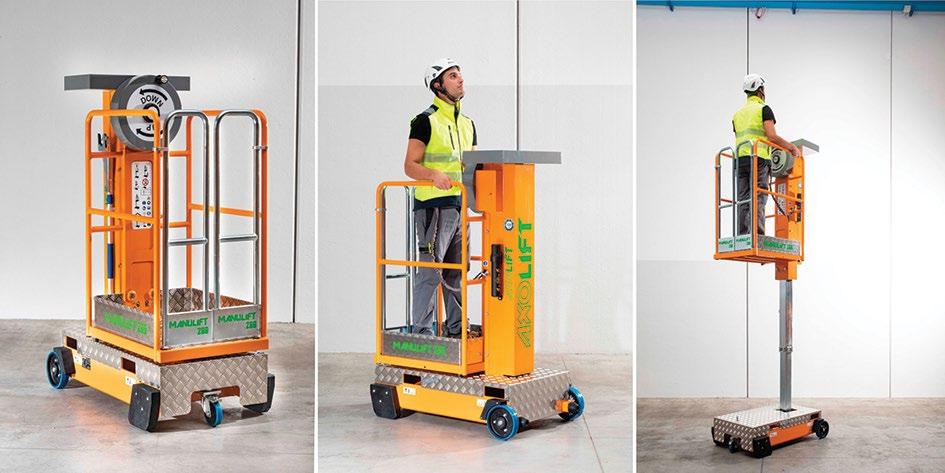
Is the market changing?
Low level lifts were initially introduced as a way of reducing falls from height. At the time the European work at height Directive 2001/45/EC was introduced, statistics showed that between 40 and 50 people died each year from low level falls and a further 4,000 suffered serious injuries. A survey at the time also showed that well over a million people used some form of low level access such as ladders, steps or mobile towers every day. However, what is now clear is that those numbers included private individuals doing jobs around the house and garden who will continue to use ladders and step when carrying out everyday tasks. Very few, if any will ever rent or buy a specific low level platform because of the purchase cost and inconvenience of moving it into place. It is only on job sites where the main contractor specifies their use or manufacturing facilities where widespread usage is now the default method.
A market research study and survey conducted by Introspective Market Research last year claims that around 50 percent of general internal building work involves ceiling heights of five metres or less, and yet more than 90 percent of the platforms sold between 2017 and 2023 for this type of work have working heights above five metres.
Productivity in data centres
Having said that, as we have mentioned already the demand for low level platforms is as much about the productivity gains as the improved safety carrying out the task. The uptake of low level lift usage in many countries can also be put down to the huge increase in construction projects such as airports, large hotels and more recently, data centres. The number of these centres currently being build is huge. For example, in Milan, Italy it is estimated there are currently 18 data centres being built in one part of the city alone… and data centres need lots of low level lifts often in clean room areas where the fully manual models are ideal.
A data centre requires miles upon miles of copper, fibre optic and power cables often ceiling mounted at heights typically ranging from 2.6 to 4.5 metres. For fire suppression, if using water sprinklers, the height of the ceiling doesn’t really matter however when using inert gas fire suppression, the higher the ceiling the greater the room volume which adds to the gas suppression cost - so about 4.2 metres seems to be the maximum height with a minimum of around 2.75 metres. Depending on the design of the data centre, cables can be routed both under the false floor or in overhead cable management systems.
Whichever system is used the lightweight low level lifts are ideal for moving around and working on the weight sensitive flooring and are so much more productive than ladders or steps. However, it should be noted that several data centre contractors prefer non powered push arounds simply because they cause less damage when working. Self-propelled models are obviously more productive, so it is a one or the other choice.
Looking at overall sales figures, self-propelled low level lifts are by far the more popular, and now apparently account for around 70 percent of sales.
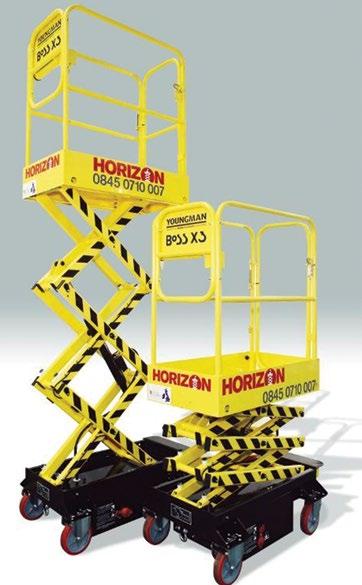
Established Market
While the market is relatively stable shipments are far lower than they should be, primarily because as we already touched on they are only popular in a few markets. The UK takes somewhere in the region of 1,500 to 2,000 each year with most other countries purchasing hundreds rather than thousands.
Some of the companies which entered the market earlier on, such as Pop Up and Boss appear to be less visible with companies such as JLG, Snorkel, and industry veteran Bravi covering the majority of the market. In the UK, Snorkel claims to be market leader in the powered machines and JLG for the push arounds. However, there are numerous other manufacturers including the up and coming Italian company Axolift and a ‘new’ player in the sector, Navigator Lifts which has recently acquired the intellectual property of the original Navigator product line.
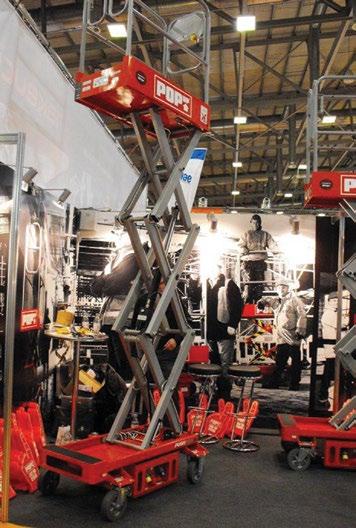
Heavier with age....
The original Pop-Up weighed 279kg. In the USA Custom Equipment shipped its first product - the 10ft self-propelled Hy-Brid HB-1030 scissor lift - in 2004 with a five metre working height and an overall weight of less than 500kg. Its introduction was driven not by regulations but by the increasing use of suspended floors, with capacities that ruled out the increasingly heavy 15ft scissor lifts. After many successful years producing Hy-Brid lifts the company was purchased in 2023 by Turkish company Asko Holding which also owns ELS and MTS. Earlier this year the Hy-Brid Lifts/Custom Equipment rebranded to become Axcs Equipment.
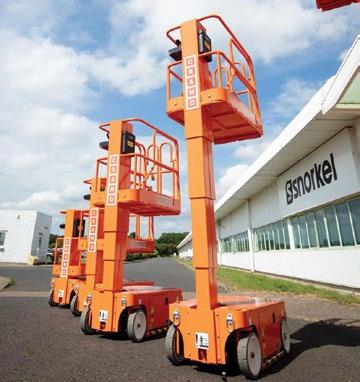
UpRight introduced its slightly larger 12ft TM12 with a 5.8 metre working height in 1994, but by 2001 its overall weight had grown to 630kg. Models such as this have since been introduced by JLG, Skyjack and more recently several Chinese manufacturers as well as ELS from Turkey. Another important manufacturer over the years in this market has been Italian manufacturer Bravi, which introduced its original Leonardo in 1995 and was almost alone for its first 10 years. So, although there are not a huge amount of manufacturers, those looking for a push around or powered low level platform have plenty of choice.
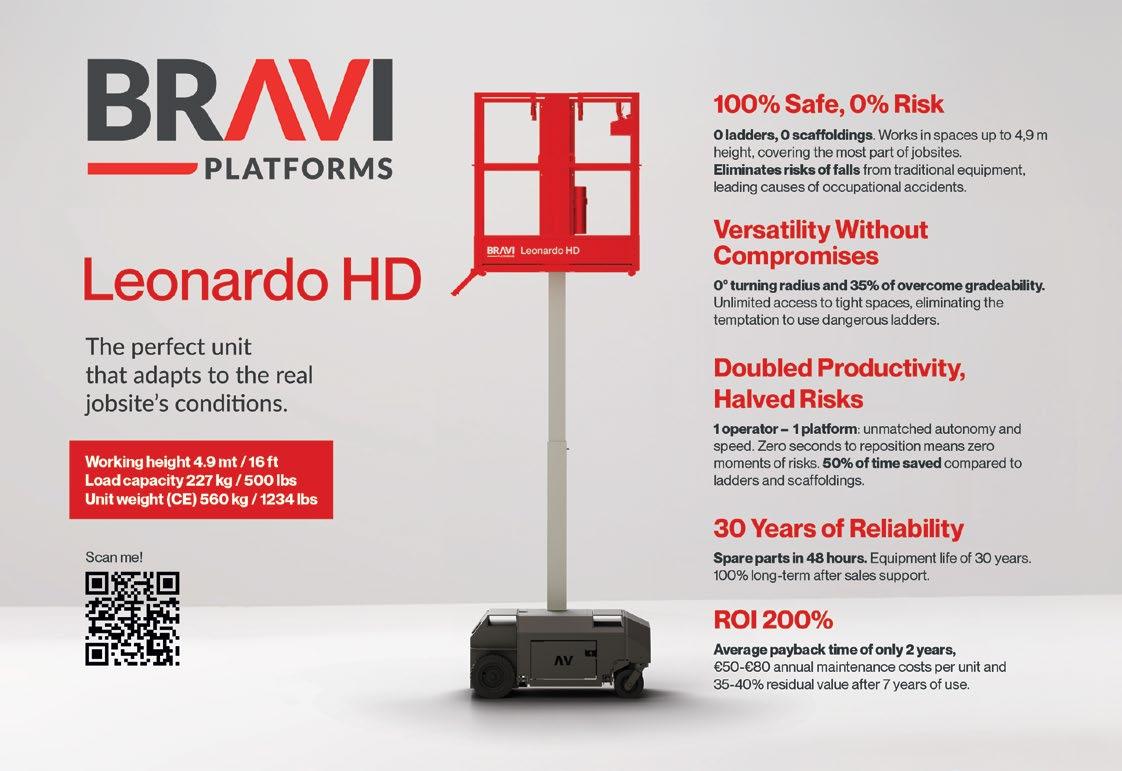
Axolift on the up
One of the relatively new entrants - launching in 2021 - is Italian manufacturer Gromet with its Axolift products. Based in Veneto in Northwest Italy the fabrication and metalworking business had produced components and fabrications forother companies over the years but decided to enter the sector with its own push around platforms using a separate facility on the other side of town. With the latest laser cutting, bending and robot welding equipment it produces most of the machines in-house - a distinct advantage in today’s tariff laden supply chains. The first two products launched were the manually operated mast type Manulift 200 and the battery powered push around Elift 350 with working heights of four and 4.95 metres respectively which went head to head with the JLG Power Towers Pecolift and Ecolift models.
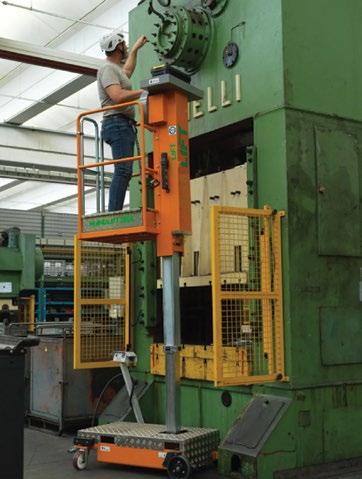
Since then, the company has expanded and rejigged its product range and facilities, along with its distribution network with dealers added in the Netherlands, the UK, Ireland, France, Lithuania, Poland, Norway, Spain and more surprisingly India.
Just over a year ago the company launched a new five metre working height push around scissor lift, the P300. The new machine - its first scissor lift - has a working height of 4.95 metres with a platform capacity of 240kg, with an overall width of 765mm, an overall length of 1.27 metres and a stowed height of just under 1.78 metres. Total weight is 380kg. The lift uses a 24 volt system for the lift function in an effort to reduce costs, and safety features include automatic two wheel braking as the platform is elevated. The chassis runs on four heavy duty castors.
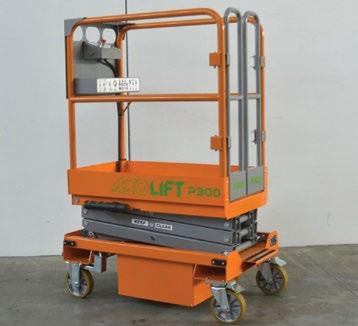
Six months later Axolift launched the 10ft Elift EL300 self-propelled mast type lift, based on its most popular model - the Elift 350. The EL300 has a 4.95 metre working height with a maximum platform capacity of 180kg - one person - with 20kg on the mast top tool tray. Improvements over the Elift 350 include an additional 10mm ground clearance - now 35mm - and improvements to the three section box mast including low friction ball bearings in place of nylon wear pads, and a hydraulic oil collector in the base in case of leaks. The control box has been moved and improved with an easier to use joystick, while the electrical system has been refined and updated for improved performance and serviceability.
Changes were also made to the electric drive system including better protection for the motors, while platform descent is powered, rather than relying on gravity. Service access to the hydraulics has also been made easier. The unit has an overall width of 770mm an overall length of 1.23 metres and an overall stowed height of 1.77 metres. Total weight is 380kg. As with the 350, fork pockets are built into the top of the chassis for better balance when lifting or moving the machine with a forklift, as is a footbrake on the rear axle in addition to the regular motor mounted brakes.
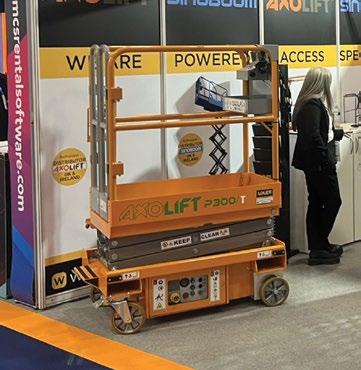
Self-propelled P300T
Axolift’s new 10ft P300T self-propelled scissor lift was launched in February, and its dimensions are virtually the same as the P300 push around. Working height is 4.95 metres however platform capacity has increased to 240kg with a 20kg tool tray capacity and overall weight of 430kg. The 24 volt battery is said to provide up to eight hours of continuous operation. Features include a battery indicator, forklift pockets, 35 percent gradeability, auto brake system, tilt sensor and overload alarm. It can also switch between push-around and self-propelled modes.
New Navigator lifts
A brand new, UK based low level lift company that has started trading this month is Leicestershire based Navigator Lifts. The company acquired the IP rights to the original Navigator product line launched in 2023 and made in Northamptonshire by Metal & Modular. The Navigator lifts designer, Michael Brown, has been appointed technical director with Scott Williams as managing director and Stuart Lambert - ex JLG and head of access at Contract Plant Rental - as sales director. The product line includes four push around lifts, the two Navigator models - the Navigator 4.5 and Navigator 6.0 which have been rebranded and re-engineered - and two all-new models, the Explora and the Scout, also designed by Michael Brown, which are due to make their global debut at Vertikal Days in September.
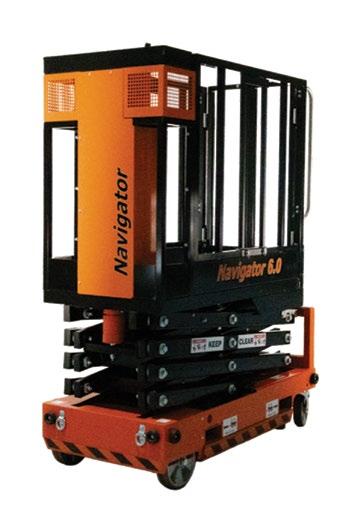
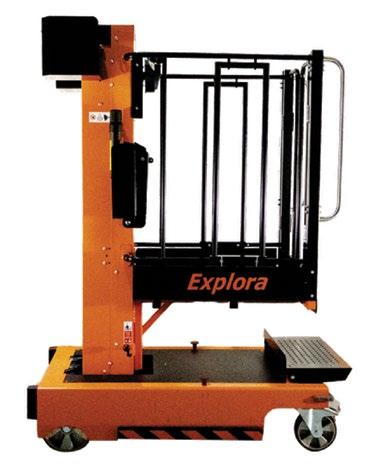
The Explora has a working height of 4.6 metres and has the addition of a fold down step-up in the platform which adds a further 300mm when required. The Explora is also wind rated to BSEN280.
The Scout is a mini version of the Explora and will have a working height of 3.65 metres and may also include the step-up. All the lifts are to be made in the UK at an existing manufacturing facility with the potential to build 400 machines a month.
“We are a startup company but have a lot of experience in the access sector,” says Lambert. “We currently have four products, but this is set to increase over the next 12 months and we are hoping to sell about 500 machines by the end of the year and then 200 per month after that. We are currently looking for a European partner and another in Dubai/UAE to cover the Middle East. A distributor in the USA is also planned.”
“Even though the company has just been formed we have had good conversations with potential customers regarding specifications, price and availability. Demonstrations are already being booked to show off their features.”
“The new Navigator models have been upgraded with numerous design improvements including uprated gas struts and a powder coated finish. The Navigator 6 is still the only six metre push around lift, while the Navigator 4.5 is the narrowest being able to pass through a 650mm wide opening. The lifts also feature outriggers and are wind rated.”
Low level update for JLG
The largest access manufacturer that offers low level lifts is JLG Power Towers with a range of eight machines - three push-around manual elevating (the Pecolift, Ecolift and Ecolift WR), four push around electric lifts (Nano 25, Nano 35, Power Tower and Power Tower Duo) and two self-propelled (Nano SP and Nano SP Plus).
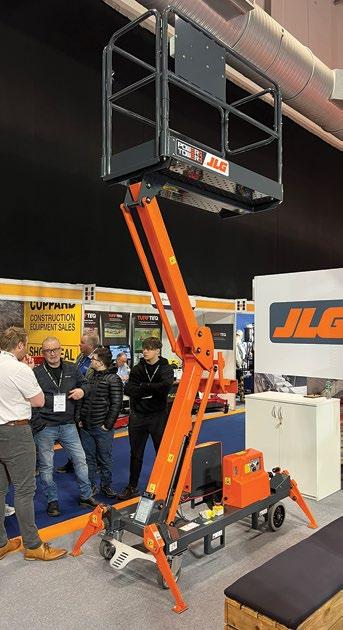
The company recently launched an improved Nano 35 for North America where it will be known as the 1230P. The key specifications remain unchanged from the Nano 35 with a 5.3 metre working height and maximum capacity of 200kg in the 850mm by 720mm platform. The overall footprint is unaltered at 1.19 metres by 760mm, and overall weight is 432kg. Other improvements include punched platform surface for improved visibility, drainage and airflow, upgraded vertical guardrails, improved castors with easier locking and unlocking, automatic brake application and easier access to the platform. JLG has also updated the smaller 830P and 1030P as well as the nonpowered EcoLift 50 and 70.
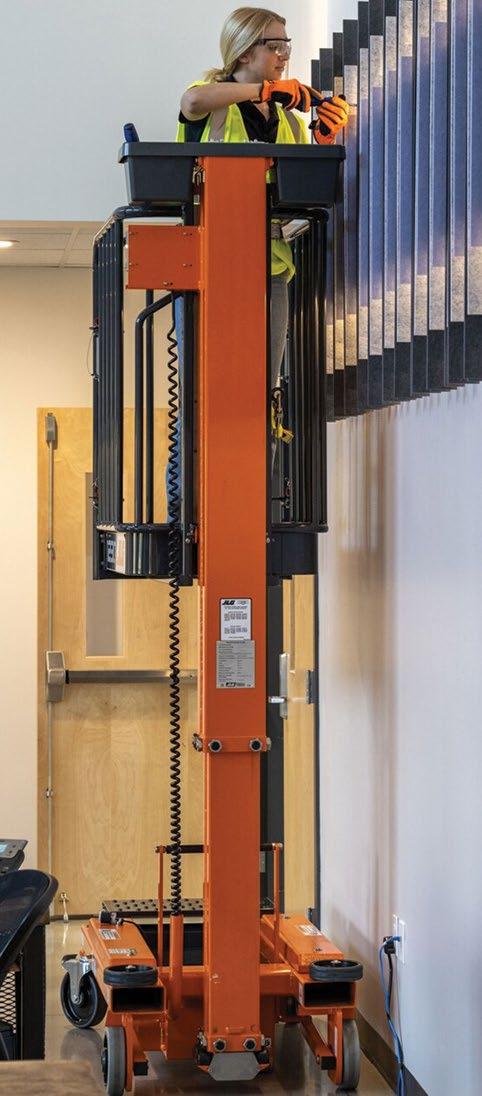
Bravi upgrades
Possibly the first company to enter the low level market, Bravi has also upgraded its key models - the Leonardo HD and Sprint LP - adding new accessories and launching the new Sprint TL. The Leonardo HD now has a 230kg unrestricted capacity across the entire dual extension platform making it more suitable for larger accessories such as the Solo-Gyps plasterboard handler for overhead installation.
The company has managed the upgrade while retaining the 1.7 metre by 630mm platform dimensions and five metre working height without increasing the overall weight which remains at 560kg for both indoor and outdoor applications. Bravi has also launched a new 90kg Pipe Rack increasing the pressure to upgrade the capacity.
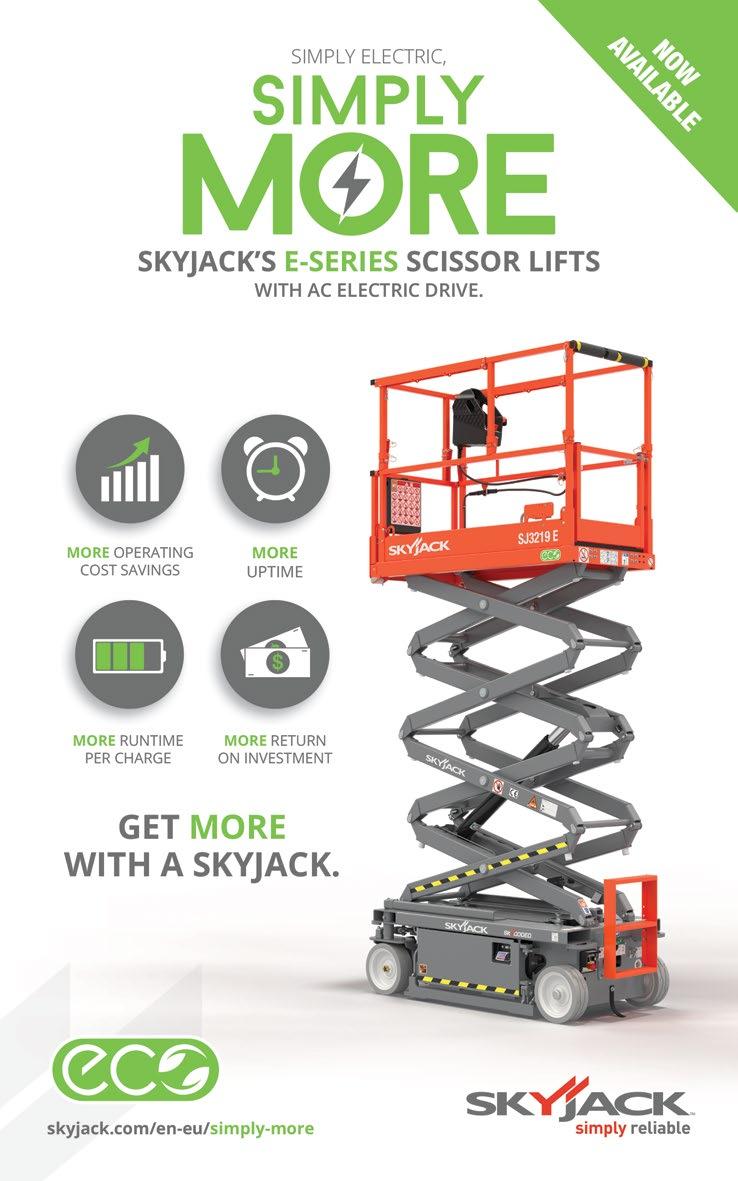
The Sprint model has had more radical updates including a new chassis which features reinforced corners and bumpers, while a new wider cargo shelf has been designed to fit both the Sprint and Sprint LP models and includes fold up edges on three sides for improved stock picking efficiency. New accessories include the ‘Suction Gun’ - a pole with a 20kg capacity suction cup on the end to grab hard to reach items at the back of a shelf or rack to increase picking efficiency.
On the Sprint LP model, the large parcels cargo shelf has been completely redesigned and is now equipped with a set of rollers on both sides to facilitate the loading of bulkier materials.
The tyre picking Sprint TL has been restyled, with operating improvements introduced based on customer feedback, including a 150kg capacity on the tyre compartment - 50kg more than the existing model - allowing it to handle 800mm diameter SUV tyres. A trade-off is a slight reduction in working height to five metres.
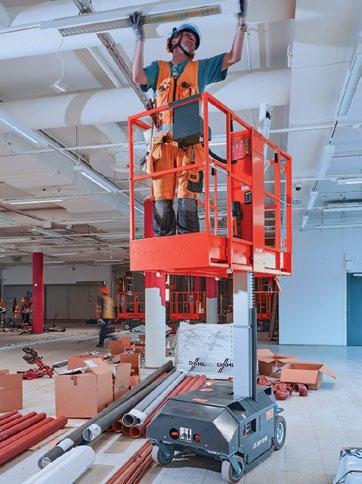
New model from Safelift
Swedish low level aerial lift supplier Safelift has launched a new version of its self-propelled 10ft MA50-R. As with the original MA50, the MA50-R has a working height of five metres, overall width of 760mm and an overall length of 1.16 metres. The platform dimensions are also the same at 530mm by 760mm with a capacity of 180kg and with a low entry level and saloon style entry gate.
However, the MA50-R features a retractable guardrail system that allows the user to reduce the platform dimensions to 530mm x 550mm in order to reach through 600mm x 600mm false ceiling openings.
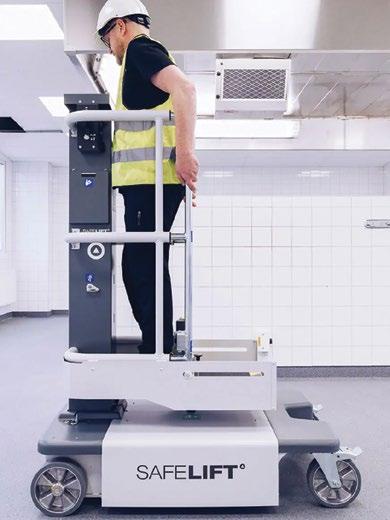
The three section mast is extended with a single hydraulic cylinder, while power comes from two 75Ah/12 volt maintenance free batteries. The MA50-R can be driven at full height, but also when stowed. It is possible to convert to ‘Push Around’ mode with the turn of a lever, transforming it to a simple low level push around lift. The machine has overall weight of 331kg.
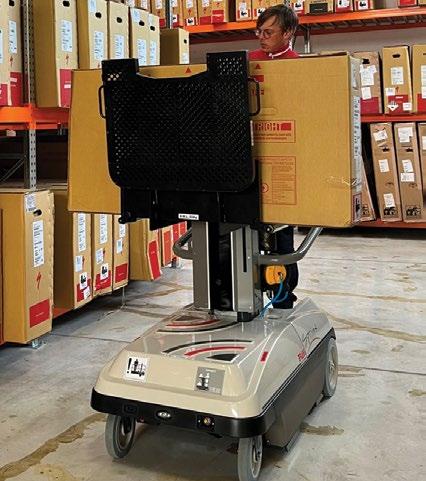
Snorkel
Snorkel low level push around lifts are available in three working heights, - the 3.81 metre/240kg S3006P, the 4.5 metre/240kg S3008P and its most popular the five metre/227kg S3010P and a self-propelled version S3010E.
Although slightly larger, the 5.6 metre working height Snorkel TM12 originally launched by UpRight in 1994 was one of the very first self-propelled mast lifts to hit the market and it is still proving popular with many wanting its more recently added 500mm rollout deck extension to reach over obstacles. The electric drive versionthe TM12E - is also in demand with a new upper control box and integrated power to platform outlet.
Other new developments
Launched at Bauma, Dutch company Altrex unveiled two new Vari-Lift models - the manual push around Vari-Lift 350 with a working height of 3.5 metres, 150kg capacity and weighing just 196kg. Dimensions are 700 by 980mm with an overall height of 1.55 metres. The Vari-Lift 420 has a 4.2 metre working height and is slightly larger at 740mm by 1.24 metres long and 1.94 metres high. Weight is 319kg.
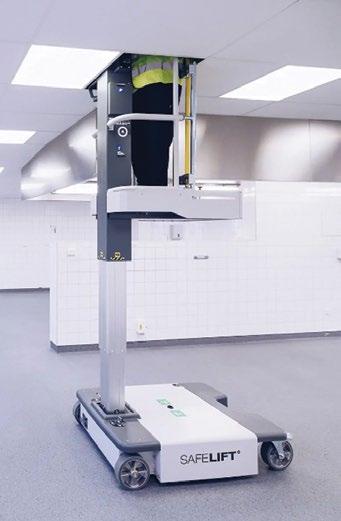
Also at Bauma, Chinese manufacturer Hynee showed two push around scissor lifts although only the five metre working height SP0507 could be classified as a Low Level Lift. Platform capacity is 240kg while it weighs 482kg. The larger 5.9 metre SP0607 has a 240kg capacity and weighs 516kg. Both use a battery powered lift. ■
